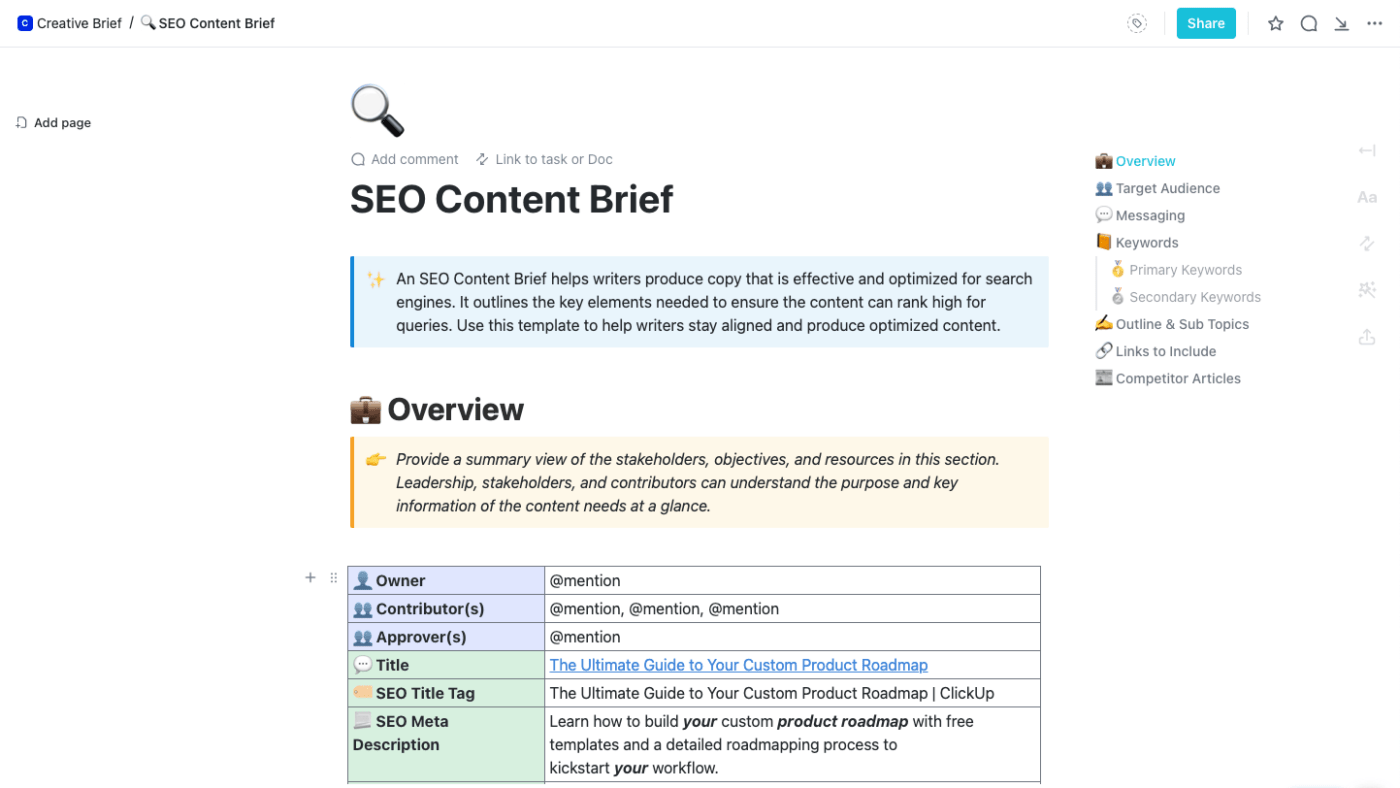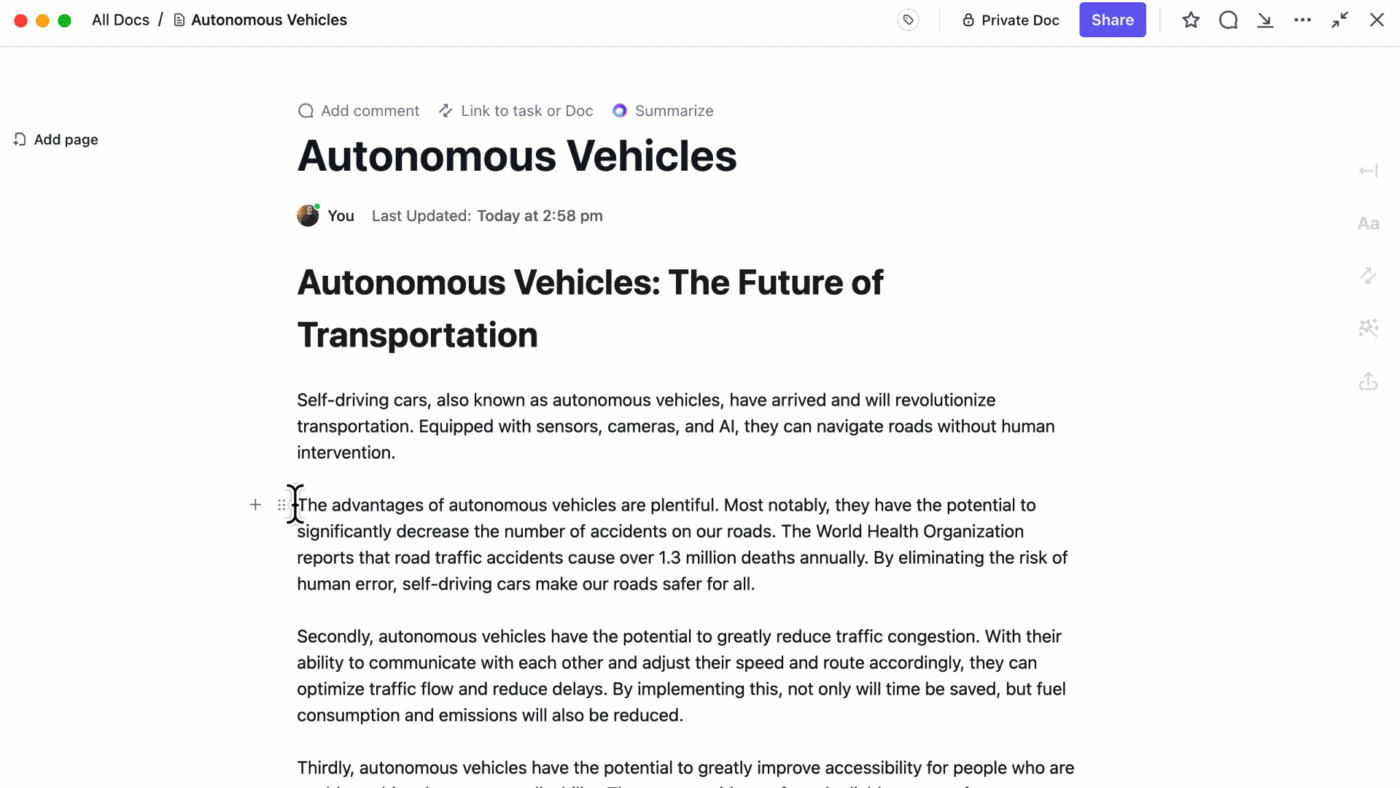How to Automate Content Creation?

Sorry, there were no results found for “”
Sorry, there were no results found for “”
Sorry, there were no results found for “”
If you’re a content marketer, chances are, there’s a constant tug-of-war within you. On one side, you’re driven to deliver a steady stream of content to meet deadlines and marketing goals. Conversely, there’s a relentless urge to build content pieces that are engaging, unique, high-quality, and creative. 📝
Both goals are essential and demand time and effort—which can quickly get overwhelming. If you focus too much on scaling, you might see quality slip. Alternatively, if you obsess over perfection, you may never generate enough content to drive the traffic you need.
Fortunately, this is where automation steps in. 🤖
By automating content creation, you can simplify and streamline the process of producing articles, blog posts, social media updates, and more. It involves leveraging tools and software to automate research, writing, editing, and publishing.
The automation of content creation significantly reduces time and effort, allowing you to focus on more strategic tasks like developing creative concepts and building deeper audience connections. Besides, by automating repetitive tasks, you may be able to reduce your reliance on manual labor.
Want to learn more? Read on as we explore how to implement AI to automate content creation.
Let’s go! 🚀
When people hear ‘automation’ in content creation, they often assume ‘content generation’ via AI. However, automated content is not always the same as AI-generated content; it’s about using tools to simplify every step of the process. In fact, you can automate content creation by using AI tools to facilitate content generation. This can be done in various ways.
For instance, you can implement AI to automate tasks like content curation, editing, proofreading, and so on. Additionally, it can also help you create fresh content ideas or repurpose existing content. Furthermore, you can also use it to generate different types of written, audio, and visual content from scratch.
The goal? Less human input, more high-quality output.
Creating content with the help of content automation tools has its risks and rewards. Let’s take a quick look at them:
The lack of human touch: AI content creation tools primarily rely on machine learning and natural language processing algorithms to generate content. So, they may not exhibit the creativity and emotional depth of human-written content, making the end product slightly less engaging.
For example, automated product descriptions for a tech gadget might simply outline its features, such as battery life and screen size, without capturing the excitement and user experience. On the other hand, a human writer could highlight how the gadget enhances daily life with compelling narratives, such as how its features make it ideal for streaming movies or improving productivity, thus creating a stronger emotional connection with potential customers.”
Poor consistency: AI tools can produce generic content. Unless the prompt is specific, the output may not align with your brand’s voice, tone, and style. This can produce generic content that can affect branding consistency, making it difficult for search engines to find and rank your content
For example, automated news summaries might not align with your brand’s specific tone and voice, leading to inconsistencies in your content.
SEO implications: AI-generated content can fail to meet SEO standards. This can hamper your content’s reach, quality, and impact.
For example, automated blog posts might neglect to incorporate relevant keywords or optimize meta descriptions effectively.
Ethical implications: AI content creation tools are notorious for producing plagiarized content. If you are not vigilant, it may create severe ethical consequences for your brand, harming its image and reputation
For example, automated research reports might inadvertently replicate content from other sources without proper attribution, leading to potential ethical and legal issues.
💡 Pro Tip: Use plagiarism detection tools to ensure that AI-generated content is original. Additionally, establish clear content creation guidelines to avoid potential ethical issues and maintain a strong brand reputation.
🚀 Tools like Buffer can automate the scheduling and posting of social media updates across multiple platforms, saving time and ensuring a consistent presence.
🚀 Tools like ClickUp Brain can quickly proofread and correct content, and even generate great first drafts, reducing the time spent on manual editing.
🚀 Software like BuzzSumo can generate a high volume of content ideas based on trending topics, helping you scale content production.
🚀 Tools like SEMrush provide insights into effective keywords and content strategies, allowing you to make data-driven decisions for your content.
According to a recent survey, as many as 87% of marketers use AI to create automated content. Therefore, let’s see how you, too, can leverage this technology to automate your content production process. 🧠
Think of content automation as an autopilot for your marketing. Although you’re still in control, the autopilot handles the repetitive work, such as drafting, scheduling, and optimizing content, giving you more time to focus on significant strategic decisions.
Every business’s content marketing goals are unique. While some create content to educate their audience, others do so to generate leads or build engagement.
So, identify your objectives before diving into the content automation process. This will help you create a robust content marketing strategy and understand what kind of content—blog posts, articles, or social media copywriting—you must develop to achieve your business goals.
Who are you creating content for?
Knowing your audience helps you personalize content and fine-tune automation. For that, use data analytics tools to create an ideal customer profile that defines your target audience’s demographics, interests, behaviors, etc.
A content marketing strategy is pivotal in selecting content automation tasks and tools. So, devote a healthy amount of care, research, and attention while creating one.
Ideally, your content marketing strategy should highlight your marketing theme, potential topics, content types, etc. Additionally, it should also address your content publication frequency, KPIs, and distribution channels.
Now that you have a plan of action, it’s time to find the right automation tools. To pick the best tools, consider factors like your automation needs, complexity of tools, integration with existing workflows, and the learning curve.
Automating content creation isn’t just about speeding up the process—it’s about smartly optimizing it. In this section, we’ll explore actionable strategies for setting up automated content workflows, from crafting effective templates to leveraging AI for idea generation, ensuring you maximize both efficiency and impact. 🤖

Templates serve as a foundational base for the AI to build your content. Try out this content writing template to build an appropriate content framework for your needs. Make one each for blog posts, social media posts, newsletters, emails, landing pages, or any other kind of content that you plan to generate. This will also help keep your content consistent.
📌 Example: A fashion brand can create templates for product descriptions, social media posts, and email newsletters. These templates are designed with placeholders for dynamic content like product names, prices, and promotions, which AI fills in automatically.

Struggling to come up with content ideas? AI tools are great for brainstorming and idea generation.
These tools use large datasets—collections of existing content and audience behavior—and apply smart algorithms to analyze patterns, trends, and interests. By doing so, they generate content ideas that resonate with your audience’s needs.
Further, AI can assist in creating detailed content briefs, outlining key headings and subsections to ensure your content performs well.
💡 Pro Tip: If you’re new to content automation, begin with simple tasks like automating topic generation or basic editing.

Organizations need to be where their audience is. And that means social media posts are a crucial component of any content strategy. Automating their creation can save time and ensure a consistent presence across platforms. By leveraging AI tools to schedule and publish social media posts, you can maintain a regular posting schedule without manual effort.
Once you’ve got your ideas, it’s time to put them into action with the right AI-powered tools for content automation. When it comes to choosing a tool, ClickUp stands out as an excellent option.
It is an all-in-one work management platform. Its vast and robust features allow it to automate every step of the content creation process.

Facing writer’s block? Once again, ClickUp Brain comes to the rescue.
In fact, ClickUp Brain can create refined, high-quality content in no time. It helps you generate top-notch content quickly while simultaneously serving as your personal writing assistant. You can use it to generate content ideas, create briefs, simplify jargon, and more.

As content writers and marketers, we never know when our next brainwave or breakthrough idea hits. With ClickUp Docs, you can quickly document your thoughts around content anywhere and at any time whenever inspiration strikes.
It’s also highly collaborative.
If you need another pair of eyes on your content draft or want someone to skim through your write-up, you can share the content and invite real-time feedback effortlessly with Docs.

Another crucial element of content automation is workflow management. Without a streamlined content creation process, even the best strategies and tools can fail. However, that’s where ClickUp Automations step in!
With over 100+ integrations across different tools and software, ClickUp seamlessly fits into your existing workflow like a missing jigsaw piece.
For instance, if you use different platforms for content planning, drafting, and reviewing, ClickUp Automations can connect these steps, thereby ensuring everything flows smoothly. This means less manual coordination and more efficient content creation.
In short, ClickUp ensures that your content process is as optimized as possible. Consequently, this frees you up to focus on what really matters: creating great content.
ClickUp also offers a beginner-friendly, fully customizable template to automate your content management system. In addition, with the ClickUp Content Management Template, you can plan and create different types of content—articles, blog posts, social media posts, newsletters, emails, and so on—across multiple channels. Use this pre-built template to:
Your automated content is ready; now let’s enhance its quality. ClickUp simplifies this process, ensuring your content meets high standards with minimal effort.

ClickUp Brain replaces all your content creation tools as a one-stop solution to automate content creation, right from ideation to editing and final proofreading. With its help, you can easily refine your content, make it grammatically accurate, incorporate changes to align your brand voice and style, etc—all in a matter of clicks!
Creating content is just one part of the process. Effective content distribution is how you make sure your audience sees it!
So, once your content is created, use automation tools to streamline its distribution across different platforms and channels, ensuring it reaches your target audience. Again, to further automate the process, use AI tools to schedule posts for social media platforms, your website, email, and more.
Here are some best practices you should consider while automating content creation:
Content marketing is a lengthy, complex process, from brainstorming ideas to distribution and performance analysis.
To get the most out of automation, identify which content stage you’d like to automate to maximize your content creation efficiency. For instance, automating content proofreading can save time by eliminating the need for last-minute reviews.
Automated content creation shouldn’t overlook SEO. It’s crucial to maintain content quality and ensure its visibility to search engines.
Therefore, prioritize SEO integration in your content automation process. Conduct thorough keyword research to add the right key terms to your content. Add elements like meta tags and links into your content.
💡 Pro Tip: Use AI tools to automatically optimize meta tags, keywords, and internal linking to boost search engine visibility.
AI automation tools can offload repetitive tasks and significantly streamline your content generation process. However, they are still prone to errors.
Incorporate human oversight to catch errors, ensure content quality, and maintain consistency. This step is crucial for keeping your content accurate and aligned with your brand’s standards.
Another good practice is to optimize how you manage the automation process by using content templates.
Right from social media content creation to long-form and short-form content creation, ensure you have a standardized template for each form of content. This way, the AI tool will be able to generate content that is consistent and aligned to your brand.
As mentioned above, automated content creation has various misconceptions and challenges. So, let’s find out how you address them to generate high-quality content with AI writing tools:
A recurring issue with AI-generated content is the lack of uniqueness. This issue arises because AI generates content purely via algorithms and datasets, and as a result, it can sometimes lack originality. Consequently, AI-generated content may miss the creative or personal touch typically found in human-written material.
Invite human editors and writers to review and refine the content, adding creativity and unique insights that AI might miss.
💡 Pro Tip: Implement ClickUp Automations to trigger quality checks or reviews. For example, automatically move tasks to a ‘Review’ status once a draft is complete and notify the relevant team members for feedback.
Also, check out these tips and strategies to humanize your AI content.
AI content creation automation sometimes fails to maintain a consistent brand voice, impacting your business’s visibility and traction.
Tackle this by creating style guides for all content types—blog posts, social media posts, and more. These guidelines ensure that each piece aligns with your brand’s identity, voice, and tone, keeping your messaging coherent and compelling.
Integrate analytics to monitor performance metrics such as engagement, readability, and accuracy to address potential quality issues in automated content.
Establish a robust review process involving human editors who can verify content accuracy, relevance, and adherence to your brand’s standards. Regularly analyze content performance and feedback to make necessary adjustments and improvements.
💡 Pro Tip: Use ClickUp Dashboards to monitor your content’s performance. Create widgets that track metrics such as content output, deadlines, and team productivity. This visibility helps you assess how well your content automation is working and identify areas for improvement.
To keep your content fresh and original, treating AI as a supplement to your creativity, not a complete substitute, is important.
AI can significantly streamline content creation by generating ideas and handling repetitive tasks. However, human oversight is crucial to maintaining content quality, uniqueness, and relevance. Without adequate supervision, relying solely on AI may lead to generic or redundant content that lacks nuance and a personal touch.
By blending AI’s efficiency with human creativity, you enhance content quality and ensure it remains authentic and original.
Content automation best practices checklist:
✅ Define clear content goals and target audience
✅ Create standardized templates for different content types
✅ Use AI tools to generate data-driven insights and content briefs
✅ Implement human review to ensure quality, brand consistency, and creativity
✅ Track performance metrics to continuously refine the automation process
Navigating the world of content marketing often feels like walking a tightrope. You need to keep up with demanding deadlines while ensuring every piece of content is engaging, high quality, and delivers results. Automating your content creation process doesn’t just ease the workload—it transforms how you approach content strategy.
That’s where ClickUp steps in. Integrating ClickUp takes your content strategy to the next level. Imagine having a system that handles repetitive tasks like drafting and scheduling while enhancing your creative output.
ClickUp’s advanced features help you streamline every stage of content creation, from ideation to distribution, allowing you to focus on what truly matters: delivering compelling and impactful narratives.
As a result, you’re left with more time to devote to engaging with your audience and refining your creative strategy. ✨
Try ClickUp today for free and experience the future of content automation! Sign up here!
© 2025 ClickUp